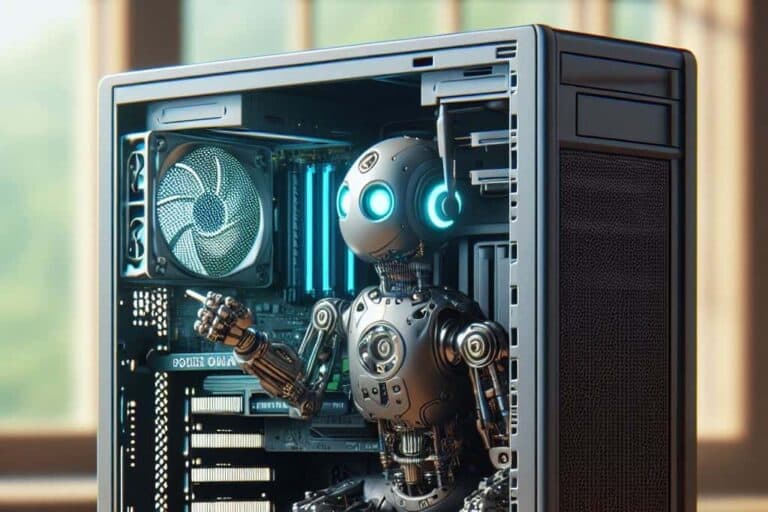A wide variety of AI PCs are now available. OEMs like Lenovo, Acer, ASUS and HP all offer laptops featuring chips from Intel, Qualcomm or AMD. But why has the desktop been left out? There are fairly logical reasons for this.
In just a few days, the second generation of AI PCs with Intel chips will see the light of day. Lunar Lake is the architecture behind the Intel Core Ultra 200V laptops that go on sale starting Sept. 24. On board is the NPU 4 with 48 AI TOPS, a specification that puts Intel about on par with Qualcomm with its Snapdragon X processors and AMD with Ryzen AI. A skunkworks outfit inside Intel was set up to complete this catch-up; the threat from the competition was too great not to make a big performance leap.
Soon we will also hear more details about Arrow Lake, Intel’s architecture that will end up on desktops, too. For the first time, a desktop PC is going to run an NPU, although that sounds more imposing than it really is. Months ago, it trickled out that this will not be an “AI powerhouse,” referring to the 13 AI TOPS that the NPU would get on board the new chip. However, that is totally irrelevant, as long as Microsoft at least cooperates.
The Copilot+ problem
The term “AI PC” has been mentioned with an almost comical frequency over the past year by OEMs and chipmakers alike. It stands in stark contrast to the relatively modest number of features that are actually exclusive to these devices. What exactly an AI PC was finally became clearer in May when Microsoft rolled out the Copilot+ label and set a defined checklist for one such computer. A true AI PC, according to Microsoft, features an NPU with at least 40 TOPS. The company still argues that Paint Cocreator or Windows Studio Effects may not work properly (or at all) without such an NPU.
The first generation of AI PCs from Intel was already disqualified for the Copilot+ label, as it only boasted a paltry 11.5 TOPS from the NPU. When combining the CPU, GPU and NPU, the figure hits just 38 TOPS.
TOPS, or one trillion calculations per second, is an arbitrary figure to base one’s judgment on. Copilot+ uses 40 TOPS from the NPU mainly as a lower limit for just enough AI computing power for relatively basic features without draining the battery in short order. The features in question include the Copilot chatbot, the generation of AI images in Paint and Windows Recall, soon to be introduced.
This Copilot+ label was by no means intended as a sign of AI muscle-flexing: after all, for more imposing calculations, even an AI PC turns to the GPU, which, in the case of Lunar Lake for example delivers 67 TOPS. Regardless, the NPU within the latest laptop chips from AMD, Qualcomm and Intel is sufficient for Microsoft’s modest requirements for Copilot+. It guarantees better battery life than would have been the case if only a CPU and GPU were present.
What are we talking about?
On desktops, this isn’t the same story. Due to the sedentary, wall-connected nature of a desktop PC, efficiency is a much less important concept. It’s nice to have a slightly lower power bill, but the other benefits are usually marginal. Switching to a new desktop computer occurs predominantly out of a need for performance gains and/or the end of the support period, as will be true for the millions of PCs that do not support the security features of Windows 11 and face the imminent end-of-life date of Windows 10.
Plug a somewhat competent GPU from recent years into a computer’s PCIe slot, however, and you can even turn a decade-old device into an AI PC. Basically any GPU can perform the same tasks as an NPU. It may not run as efficiently, but it is many times faster if the horsepower is there.
By comparison, NPUs intended for Copilot+ have between 40 and 48 TOPS, while an entry-level GPU from Nvidia already offers 100 TOPS. The RTX 4090, currently the most powerful GPU that can be ordered off-the-shelf, supports the downright absurd number of 1300 TOPS. So, with a bit of trickery, you can run 32x the amount of AI workloads that an “AI PC” can manage.
Just as importantly: local, demanding AI tasks are possible provided you have the hardware available. Running an LLM on a mobile AI PC requires significant compromises, weakening the accuracy of the AI output. In fact, this involves quantization, which simplifies the formulas behind the AI model to fit within system memory. This needs to be done to a much lesser extent on stronger hardware.
Artificial requirement
We hope that Microsoft will eventually abandon the Copilot+ label, or at least the requirements that are only sensible on mobile devices. The decision to keep using Copilot+ in this manner may be attractive from a marketing point of view, but above all, it’ is a kick in the butt’s a motivator for chipmakers to meet a hard minimum requirement. With Intel, Qualcomm and AMD meeting this, it is time to look beyond it. On desktops, an artificial requirement to have an NPU with at least 40 TOPS is completely nonsensical. It would make sense to keep 40 TOPS for the GPU as a requirement in place, but that is an incredibly low threshold. Even the iGPUs in newer AMD and Intel chips meet this, whereas this was not the case nearly two years ago. The desktop world is ready to join the AI PC trend, it just takes some software trickery to unlock it.
Also read: Intel launches Core Ultra 2, the answer to Qualcomm and AMD
